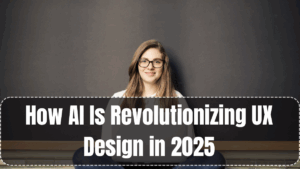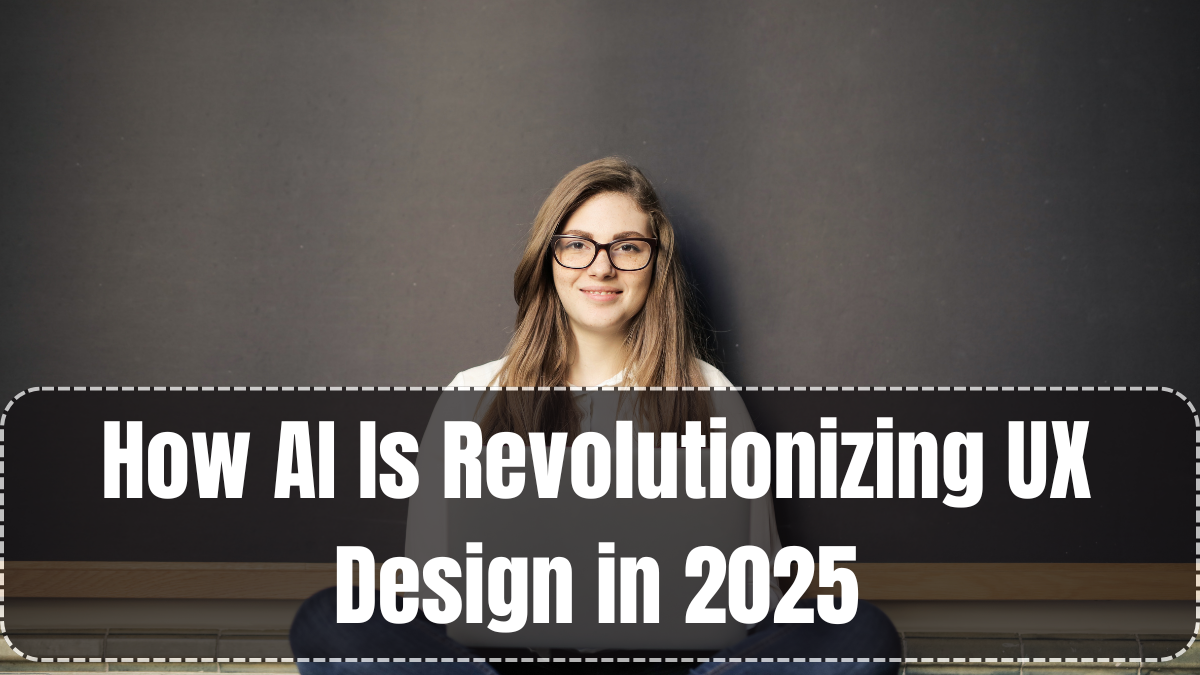In 2025, the digital design world is undergoing a rapid transformation—driven not just by user expectations, but by the intelligent integration of AI in Web Design. Artificial Intelligence is no longer a futuristic concept in the UX world—it’s now a working tool that actively enhances personalization, speeds up design processes, and eliminates repetitive work.
From automated wireframing to real-time user feedback analysis, AI is helping designers focus on creativity and strategy, while the tech handles data-heavy and optimization tasks. For businesses and users alike, this means better experiences, faster rollouts, and highly tailored interfaces.

Smarter User Journeys with AI
User journey mapping, once dependent on manual heatmaps and survey data, is now more dynamic thanks to AI. Platforms like Hotjar and FullStory use AI to process thousands of user interactions in real time—suggesting layout changes, identifying friction points, and predicting user behavior based on engagement history.
This allows designers to:
-
Preempt user drop-offs with predictive design
-
Customize user flows based on individual behavior
-
Personalize content blocks automatically for returning users
By learning how real users behave, AI tools create web journeys that evolve continuously and intelligently.
Automated UI Design & Layouts
One of the most popular applications of AI in Web Design is layout automation. Tools such as Uizard, Framer AI, and Adobe Sensei allow designers to:
-
Convert hand-drawn sketches into digital prototypes
-
Auto-generate UI components based on design patterns
-
Suggest layout improvements based on accessibility standards
With drag-and-drop simplicity and AI-suggested design systems, beginners and pros alike can craft elegant, responsive interfaces with a fraction of the time spent earlier.
Voice, Chatbots & AI-Driven Interfaces
In 2025, UX isn’t just about what users see—it’s also about how they interact. AI-powered voice assistants and chatbots are now seamlessly integrated into modern websites and mobile apps.
Key applications include:
-
AI chatbots: Tools like Tidio and Drift use AI to resolve queries, reduce bounce rates, and increase conversions.
-
Voice UX: More websites now support voice navigation, powered by NLP engines like OpenAI’s Whisper or Google’s Dialogflow.
-
Conversational design: Chat-style interfaces help simplify complex services, such as financial tools or insurance queries.
This evolution means UX designers must now consider tone, language flow, and conversation branching as part of their user journey maps.
Real-Time Testing and AI Feedback Loops
A game-changer in AI in Web Design is how A/B testing has evolved. AI now performs continuous multivariate testing, tweaking color palettes, button placements, and call-to-actions based on real-time user data.
Benefits include:
-
Quicker optimization cycles
-
Higher conversion rates
-
User behavior insights in visual dashboards
AI tools like Google Optimize (with AI upgrades), VWO, and Optimizely X now automate the entire process—allowing even small businesses to act on sophisticated analytics.
AI in Accessibility and Inclusive Design
In 2025, AI is not just improving aesthetics—it’s making the web more inclusive. Accessibility features enhanced by AI include:
-
Real-time alt text generation for images
-
Automatic font and contrast adjustments based on vision settings
-
Voice reading enhancements for screen readers
-
Motion control and gesture-based navigation for users with disabilities
AI-driven platforms like Stark and AccessiBe help designers integrate WCAG compliance right from the prototype stage—eliminating costly retrofits.
Design Systems Powered by Machine Learning
Design systems in 2025 are no longer static guidelines. They’re now smart frameworks that adapt and evolve using AI. Platforms like Supernova and UXPin Merge integrate machine learning to recommend:
-
Consistent components across teams
-
Best performing templates per project type
-
Coding and export automation for handoff to developers
This leads to faster collaboration, reduced errors, and stronger brand coherence across products.
FAQs
How does AI improve user experience on websites?
AI enhances UX by analyzing user behavior, personalizing interfaces, automating content, and predicting user needs for smoother navigation and interaction.
Can designers without coding knowledge use AI tools?
Yes, many AI design tools like Uizard and Wix ADI offer drag-and-drop interfaces that require no coding, making them accessible to non-technical creatives.
Is AI replacing human UX designers?
No. AI supports designers by automating repetitive tasks and offering data-driven suggestions. The creative and emotional aspect of UX still relies on human insight.
Are AI-generated designs SEO-friendly?
Yes, if the AI tool follows best practices. Many platforms optimize for mobile responsiveness, page speed, and content structure automatically.
What is the biggest challenge in using AI for UX?
Balancing automation with human creativity. Over-relying on AI may result in generic or overly templated experiences if not guided by strong human design input.
Click here to know more.
